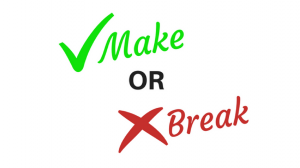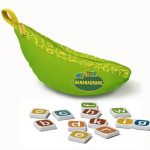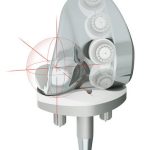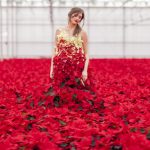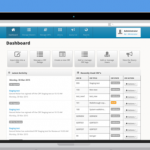Seven tips for providing images to the media

In our last post we looked at how important images are to the journalists who use ResponseSource. If you’re trying to get your product or client into a story, you’re more likely to succeed if you can offer an eye catching image. In print, newspapers and magazines continue to struggle with dwindling staff and budgets. Online, journalists are competing for the attention of readers scanning feeds and social media. Unique, print quality images and convenient photo opportunities make journalists’ lives easier. Based on twelve months of enquiries from journalists, we’ve tried to sum up some tips to help anyone dealing with the media to provide the right images, first time.
The golden rule always applies – read the journalist’s request – then read it again. If the request is brief then check out guidelines from the publication they’re working for on your media database (we know a good one…), the outlet’s own website or its media pack. Don’t be afraid to ask the journalist if necessary – it will often save time for everyone in the end.
1) Take a good look at your image file sizes – even today a journalist may be using expensive mobile data abroad, or simply be working on a massively popular feature. I recently helped a stressed journalist with a Christmas gift guide request and found myself manipulating over 500MB of photos in the space of a few hours. That could be enough to make anyone’s email want to have a bit of a lie-down with the curtains closed.
If they’ve specified hi-res images, then by all means send them, but if not, consider the following options instead:
– a small but clear thumbnail picture to act as a preview – it saves the recipient time if they can scan and decide if an image is suitable or not within seconds. Make sure it’s still big enough to be useful though:
sometimes I ask to see lo res in the first place in my requests and they send me pics the size of a stamp and I can’t see if they’re what I want, so it’s a waste of time (freelance features journalist)
Or
– send a link to your images online – If you’ve been told to send no images or attachments at all then this is your only option, but it can be a good choice if, for example, you’re representing a complicated product or a range of products that are better illustrated with a gallery, video or lookbook. If you are sending a link rather than attaching images, make sure the links are clear (not embedded in “here and here”) and include a short, lucid description – for example “Images of the whole range are available at: http://www…. Including the newly launched RoboSlug 3000 at http://www……roboslug3000.jpg”. However, if the journalist has asked for images, make sure you include them – it’s so much quicker to scan a page of pictures than to click through to individual files on a website.
To show the range of different requirements, here are comments we received from journalists:
I do a lot of work for the Absolutely London titles and Trinity Mirror regional papers and for papers I ask for a minimum 1mb jpg format pic for the papers, and ideally 2mb minimum for magazines. This is less of a problem than it used to be – I’m in property and estate agents these days use decent cameras and often employ in-house or freelance professionals, so the days of ‘snaps’ are rapidly disappearing. (Nigel Lewis, property journalist)
The best format for me is usually high quality 300dpi jpeg and I can then resize to suit the article. A file size of 1Mb is ideal. I usually resize images depending on the CMS I’m using – normally either 820×548 pixels or 650×350 pixels. (B2B content editor)
I tend to want low res JPGs (no more than 100kb) to see what they have, then if they work, I ask for the high res versions…High res is 1-3MB…anything bigger is too big! (National newspaper section editor)
hi-res, min 300dpi and ideally 2mb plus (news agency features editor)
I most frequently want images that work in print in the first place, so 300dpi and around A4 dimensions. Even if I’m going to use them on the web, it works to send that size and I can make them smaller myself for web-only features. JPG is fine; sometimes people send me TIFFs, also fine. I prefer it if people send me images that aren’t too huge: sometimes they’ll send 20Mb (per pic) and if there a few of them they take ages to download and ages to send over to whoever’s commissioned me. (freelance features journalist)
Remember space can be tight and not all journalists will be able to use a huge original:
Our guidelines are that any pictures should be cropped to 440px by 330px – and basically a good-quality jpeg. I don’t like other formats. (Membership magazine deputy editor)
2) Make high quality images easily available – as mentioned above, you may not send these through first time around, but always have them ready to send, or make them easy to download (preferably both). It may be a picture editor or designer who needs these images rather than the journalist you’re working with, so having them on an online newsroom or image library that you link to in all your press releases and emails makes sense. It means even if you’re out of the office the outlet can have access to a range of photos without waiting for you to be back at your desk. Try to make sure the images can be reached without logging in or registering – it’s a pain for a journalist in a hurry, and it might even mean they go with your competitor’s story just because a deadline is looming and they need pictures quickly.
[the number one thing is]…having the images to hand (shocking how many aren’t prepared and either can’t provide or expect you to wait a week) (news agency features editor)
Providing you consider file sizes as above, attachments have their advantages, but be wary of zip files. They may make it easier to transfer a batch of photos but don’t always make life easier for a journalist (and some people are concerned about security risks as you can’t see the contents before saving it to your computer).
I would also say to send it as an attachment, and not embedded in any article or on a website – or in a WinZip folder, which drives me mad! (B2B content editor)
3) Give plenty of thought to the content of your images – put yourself in the place of a reader and think about what you’d want to see when you’re poring over the final story. If you want a journalist to write about something, you should try to have images of it – whatever “it” is – available.
Physical products – journalists often request a white cut-out image that shows texture, colour or features. If it’s a gadget, a diagram or spec sheet might be useful (the latter should also be available in text form). Make sure the whole product is pictured, as it’s more flexible (the picture editor or designer will do their own cropping if that’s what they want for a layout). Some products need to be illustrated with lifestyle photos, with the product in use or in situ – and often a journalist will want a choice of both lifestyle and cut-out to offer their editor or to give variety to a blog post. If it’s a consumable product – like food or cosmetics – then you’ll often see photos of the product spilled or spread across a white background, which can give a feeling for varying textures and colours. You’re looking to provide both clarity and variety. Here are a few cut-out examples from ResponsSource Press Release Wire:
- Cut-out: Bananagrams new launch for under-4s
- Lifestyle: Urban Orchard cider ready to sip
- Cut-out: Innovate UK knee replacement implant
- Lifestyle: Sennheiser wireless headset in an office setting
For the most part, product round-ups will want a decent cut out product pic on white background, just a plain quality image that clearly shows what it is from a sensible angle (no artsy blurry filters!). Sometimes lifestyle shots are essential but more for interiors and home. Generally with products just have a batch of decent cut outs to hand for every product you put forward. (news agency features editor)
Stories about people – if you’re offering an expert or a case study, the single most important thing to have to hand is a headshot, or ideally a series of headshots. For experts and spokespeople this needs to be clear and professional – think passport photos, with room for a tiny bit more personality. Any expert or spokesperson you represent should have recent versions of these available – if not, arrange for them to have a new set taken. Think of the number of opportunities for letters, bylined stories or pages full of faces and quotes – you don’t want your client to miss out on one of these just because they weren’t able to get a photo taken or sent in time.
- Portrait: Yuliana Topazly, founder of MyOutSpace and BuddyWith
- Charity event: The 401 Challenge and founder Ben Smith
- Charity fundraiser: Ali Richards from Payingtoomuch.com
- Portrait: Michael Buerk, Prostate Project patron
For case studies, whether it’s a user of your product, a charity user or fundraiser or just an individual you represent, the same applies – recent, clear portrait photos. You may need to provide more variety as well – for example before and after shots for a weight loss or surgery story, a full-length photo for makeovers (you may even need to include measurements), or group or crowd photos for events or venues.
4) You may need to provide a photo opportunity or review product – whether your story is about a place, a person, or a product, be prepared to make it available to a photographer. The images you have to hand will help a journalist decide if you (or your product or client) is right for the story, but they may not want to use the same pictures that other publications have used, so be flexible. This may mean briefing your case study or expert so they’re prepared to be called for an interview and photo shoot, at a publication’s office or another venue. With products, you should be prepared to send one or more to a journalist or photographer’s studio, and agree with them in advance if a valuable product needs to be returned (if you need a product returned agree when, and what arrangements you’ll make to collect it). It may also mean making arrangements for them to visit you or your client’s premises, and giving them time to get their own images right.
5) Provide captions and meaningful file names – whether you’re emailing photos or hosting them on your newsroom, provide descriptions of your photos that make sense. It makes them easier to find in future, and easier to use or ask you about. This doesn’t have to be lengthy or complicated: a headshot with the file name katycarr_paradise_ltd.jpg rather than DSC62789.jpg, or roboslug3000_gold.jpg for example. It takes seconds to do, and makes life easier for the journalist – who may remember you for this considerate behaviour in the future.
6) Landscape or portrait, cut-out or lifestyle, arty or technical, infographics and diagrams….as before, think of the reader, try to have a good range of image formats available. Some layouts will require a specific format (for example a blog layout that always uses landscape photos at the top of a post) and it could scupper your story if the image you’ve provided won’t fit – and someone else’s does.
- MyGardenSchool image for its garden design course
- International Poinsettia Day marked by this living poinsettia dress
- Clindox CRFweb software screenshot
7) Dropbox, WeTransfer, OneDrive, Box, Google Drive – They’re useful, but not perfect so you should still always have images available to send or download. A journalist may come back to your story in a couple of months’ time and it can be frustrating to find a link is broken and an image missing. This is another good reason for having an easy to find image section on your own or your client’s newsroom – it also makes it easy for a journalist you’ve not already dealt with to find your images. Make use of these kinds of services, but be aware that links can expire and not being able to see the image before downloading can waste a journalist’s time, especially if you try to use the same batch of images for all requests rather than providing the images a journalist needs for a specific story:
It’s also time consuming if I ask to see possible pics of something specific and they send me a WeTransfer of everything they have (eg I want one room, and they send me a link to download pics of every room in a house). (freelance features journalist)
Every journalist and media outlet is different – not to mention every feature. As always, putting yourself in the position of the journalist you’re working with and listening to their request will make life easier for them and make it more likely that you’ll get the coverage you’re after. Have we missed something or got something wrong? Or are we guilty of putting the journalists’ needs first without considering how tough it can be to get these images from clients in the first place? Let us know in the comments below.
